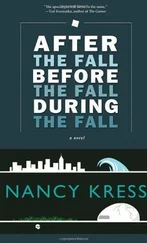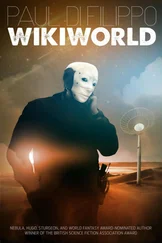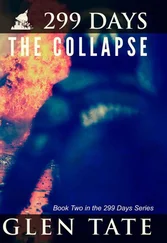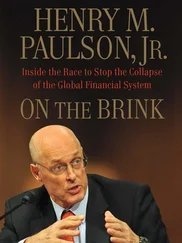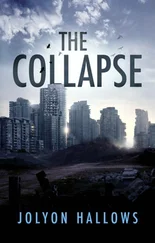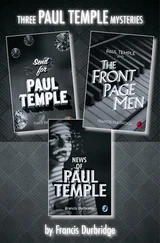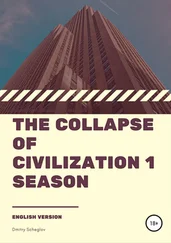The bureaucrats managing the camp—Hannah Lawes and her peers—were not immune to the shifting psychic tenor of Femaville 29. From models of optimism and can-do effectiveness, the officials began to slide into terse minimalist responses.
“I don’t know what more we can do,” Hannah Lawes told me. “If our best efforts to reintegrate everyone as functioning and productive members of society are not appreciated, then—”
She left the consequences unstated, merely shaking her head ruefully at our ingratitude and sloth.
The one exception to this general malaise were the children.
Out of a thousand people in Femaville 29, approximately two hundred were children younger than twelve. Although sometimes their numbers seemed larger, as they raced through the camp’s streets and avenues in boisterous packs. Seemingly unaffected by the unease and dissatisfaction exhibited by their guardians and parents, the kids continued to enjoy their pastoral interlude. School, curfews, piano lessons—all shed in a return to a prelapsarian existence as hunter-gatherers of the twenty-first century.
When they weren’t involved in traditional games, they massed on the outskirts of the camp for an utterly novel undertaking.
There, I discovered, they were building a new city to replace the one they had lost.
Or, perhaps, simply mapping one that already existed.
And Izzy Horsley, I soon learned (with actually very little surprise), was one of the prime movers of this jovial, juvenile enterprise.
With no tools other than their feet and hands, the children had cleared a space almost as big as a football field of all vegetation, leaving behind a dusty canvas on which to construct their representation of an imaginary city.
Three weeks into its construction, the map-cum-model had assumed impressive dimensions, despite the rudimentary nature of its materials.
I came for the first time to the site one afternoon when I grew tired of continuously keeping Nia company in the exercise tent. Her own angst about ensuring the best future for herself and loved ones had manifested as an obsession with “keeping fit” that I couldn’t force myself to share. With my mind drifting, a sudden curiosity about where Izzy was spending so much of her time stole over me, and I ambled over to investigate.
Past the ultimate tents, I came upon what could have been a construction site reimagined for the underage cast of Sesame Street .
The youngest children were busy assembling stockpiles of stones and twigs and leaves. The stones were quarried from the immediate vicinity, emerging still wet with loam, while sticks and leaves came from a nearby copse in long disorderly caravans.
Older children were engaged in two different kinds of tasks. One chore involved using long pointed sticks to gouge lines in the dirt: lines that plainly marked streets, natural features and the outlines of buildings. The second set of workers was elaborating these outlines with the organic materials from the stockpiles. The map was mostly flat, but occasionally a structure, teepee or cairn, rose up a few inches.
The last, smallest subset of workers were the architects: the designers, engineers, imagineers of the city. They stood off to one side, consulting, arguing, issuing orders, and sometimes venturing right into the map to correct the placement of lines or ornamentation.
Izzy was one of these elite.
Deep in discussion with a corn-rowed black girl and a pudgy white boy wearing smudged glasses, Izzy failed to note my approach, and so I was able to overhear their talk. Izzy was holding forth at the moment.
“—Sprankle Hall covers two whole blocks, not just one! C’mon, you gotta remember that! Remember when we went there for a concert, and after we wanted to go around back to the door where the musicians were coming out, and how long it took us to get there?”
The black girl frowned, then said, “Yeah, right, we had to walk like forever. But if Sprankle Hall goes from Cleverly Street all the way to Khush Lane, then how does Pinemarten Avenue run without a break?”
The fat boy spoke with assurance. “It’s the Redondo Tunnel. Goes under Sprankle Hall.”
Izzy and the black girl grinned broadly. “Of course! I remember when that was built!”
I must have made some noise then, for the children finally noticed me. Izzy rushed over and gave me a quick embrace.
“Hey, Parrish! What’re you doing here?”
“I came to see what was keeping you guys so busy. What’s going on here?”
Izzy’s voice expressed no adult embarrassment, doubt, irony or blasé dismissal of a temporary time-killing project. “We’re building a city! Djamala! It’s someplace wonderful!”
The black girl nodded solemnly. I recalled the name Vonique from Izzy’s earlier conversation, and the name seemed suddenly inextricably linked to this child.
“Well,” said Vonique, “it will be wonderful, once we finish it. But right now it’s still a mess .”
“This city—Djamala? How did it come to be? Who invented it?”
“Nobody invented it!” Izzy exclaimed. “It’s always been there. We just couldn’t remember it until the wave.”
The boy—Eddie?—said, “That’s right, sir. The tsunami made it rise up.”
“Rise up? Out of the waters, like Atlantis? A new continent?”
Eddie pushed his glasses further up his nose. “Not out of the ocean. Out of our minds.”
My expression must have betrayed disbelief. Izzy grabbed one of my hands with both of hers. “Parrish, please! This is really important for everyone. You gotta believe in Djamala! Really!”
“Well, I don’t know if I can believe in it the same way you kids can. But what if I promise just not to dis believe yet? Would that be good enough?”
Vonique puffed air past her lips in a semi-contemptuous manner. “Huh! I suppose that’s as good as we’re gonna get from anyone, until we can show them something they can’t ignore.”
Izzy gazed up at me with imploring eyes. “Parrish? You’re not gonna let us down, are you?”
What could I say? “No, no, of course not. If I can watch and learn, maybe I can start to understand.”
Izzy, Vonique, and Eddie had to confer with several other pint-sized architects before they could grant me observer’s status, but eventually they did confer that honor on me.
So for the next several days I spent most of my time with the children as they constructed their imaginary metropolis.
At first, I was convinced that the whole process was merely some over-elaborated coping strategy for dealing with the disaster that had upended their young lives.
But at the end of a week, I was not so certain.
So long as I did not get in the way of construction, I was allowed to venture down the outlined HO-scale streets, given a tour of the city’s extensive features and history by whatever young engineer was least in demand at the moment. The story of Djamala’s ancient founding, its history and contemporary life, struck me as remarkably coherent and consistent at the time, although I did not pay as much attention as I should have to the information. I theorized then that the children were merely re-sorting a thousand borrowed bits and pieces from television, films and video games. Now, I can barely recall a few salient details. The Crypt of the Thousand Martyrs, the Bluepoint Aerial Tramway, Penton Park, Winkelreed Slough, Mid-winter Festival, the Squid Club— These proper names, delivered in the pure, piping voices of Izzy and her peers, are all that remain to me.
I wished I could get an aerial perspective on the diagram of Djamala. It seemed impossibly refined and balanced to have been plotted out solely from a ground-level perspective. Like the South American drawings at Nazca, its complex lineaments seemed to demand a superior view from some impossible, more-than-mortal vantage point.
Читать дальше


